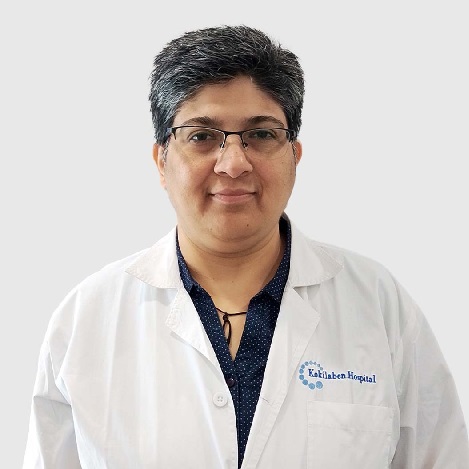Since this cancer grows quickly, it is important to begin prompt acute myeloid leukaemia treatment. The factors that influence the type of treatment modality include:
The AML subtype
The results of cytogenetic analysis
Whether the AML is in the central nervous system
Whether cancer has not responded to treatment or relapsed
Whether the patient has had myelodysplastic syndrome (MDS) or other blood cancer
Whether the patient has received chemotherapy in the past to treat a previous cancer
The patient’s age and general health
The patient’s preferences
In general, the treatment for AML is divided into two phases:
Remission Induction Therapy: The first treatment phase is called induction therapy.
This phase aims to induce remission by eliminating as many leukaemia cells as possible.
However, this phase usually does not wipe out all the leukaemia cells. Therefore, the patient requires further treatment to prevent the disease from returning.
Consolidation Therapy: After achieving remission with induction therapy, the second phase of treatment begins.
Also known as maintenance or post-remission therapy, consolidation therapy aims to eliminate any remaining leukaemia cells.
This phase helps to prevent relapse and improve long-term outcomes.
Acute myeloid leukaemia treatment used in these phases includes:
Chemotherapy: Chemotherapy is a vital component of the treatment approach for AML.
It involves using powerful drugs (Venetoclax, Cytarabine, Azacitidine) to kill leukaemia cells and achieve remission.
While it is majorly used for remission induction therapy, it can also be used for consolidation therapy.
Patients may receive high-dose cytarabine (Ara-C) or HiDAC for five days each month for consolidation and maintenance therapy. The treatment may continue for 3 to 4 months to kill any remaining cancerous cells and lower the risk of cancer recurrence.
Targeted Therapy: Targeted therapy is an innovative approach to treating AML, focusing on specific genetic mutations or abnormal proteins in leukaemia cells.
Unlike traditional chemotherapy, targeted therapies are designed to selectively attack cancer cells while sparing healthy cells, potentially leading to more effective and less toxic treatments.
Targeted therapy may treat AML that has returned or not responded to chemotherapy.
Bone Marrow Transplant: A healthcare professional may recommend a bone marrow transplant or a stem cell transplant for AML patients in remission and who can tolerate intensive chemotherapy.
The procedure may be used during consolidation therapy. It involves replacing diseased or damaged bone marrow with healthy stem cells to regenerate healthy bone marrow.
Before a bone marrow transplant, the patient receives high-dose chemo or radiation therapy to kill the remaining leukaemia cells in the body. Then, they receive an infusion of stem cells from a compatible donor (allogeneic stem cell transplantation).
The patient can also receive their own stem cells (autologous stem cell transplantation) if they were previously in remission and had stem cells collected and stored before chemotherapy.
Clinical Trials: Some people with AML may enrol in clinical trials to try experimental treatments. It can be the best treatment choice for some patients.
Cost of Acute Myeloid Leukaemia Treatment
The cost of acute myeloid leukaemia treatment depends on several factors, including the stage of the cancer, the treatment approach, the patient’s age, the patient’s comorbidities, location and type of hospital, doctor’s expertise, insurance coverage and much more.
To know the exact cost of acute myeloid treatment, one should consult their doctor. The below table also provides the approximate cost of various treatment modalities for acute myeloid leukaemia.
Surgery Name | Surgery Cost |
Chemotherapy | ₹75,000 to ₹2,50,000 |
Targeted Therapy | ₹80,000 to ₹2,25,000 |
Bone Marrow Transplant | ₹15,00,000 to ₹27,00,000 |
Survival Rate for Acute Myeloid Leukaemia
The five-year survival rate for people with AML is 31.7%. The survival rate decreases as the patient’s age increases.
According to this acute myeloid leukaemia life expectancy statistics, less than 1 in 3 people who receive a diagnosis for AML will survive for more than five years after diagnosis. The acute myeloid leukaemia survival rate depends on several factors, including:
The patient’s age
The stage of AML
The presence of genetic or chromosomal risk factors
The acute myeloid leukaemia death rate is 2.7 per 100,000 men and women. Approximately 11,400 deaths occur every year due to AML.
Acute Myeloid Leukaemia Prognosis
Younger patients with AML generally have a better prognosis than older patients. When a bone marrow biopsy shows no signs of acute myeloid leukaemia, the person is said to be in remission.
An estimated 50% to 80% of people achieve complete remission after AML treatment. It occurs more in children and people under the age of 60.
About 50% of people in complete remission may develop recurrent AML. In such situations, doctors may suggest additional chemotherapy, stem cell transplantation, or participation in clinical trials.



























